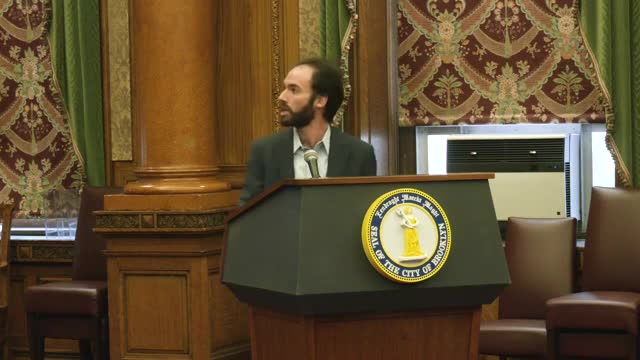Zoning reforms aim to tackle New York's housing crisis
May 07, 2024 | Kings County - Brooklyn Borough, New York

This article was created by AI summarizing key points discussed. AI makes mistakes, so for full details and context, please refer to the video of the full meeting. Please report any errors so we can fix them. Report an error »

In a recent government meeting, officials discussed a comprehensive proposal aimed at addressing New York City's ongoing housing crisis through zoning reforms. The Department of City Planning (DCP) emphasized that while zoning is a crucial tool, it alone cannot resolve the housing shortage. The proposal seeks to amend the city's zoning resolution to facilitate the construction of more diverse housing options across various neighborhoods.
Key elements of the proposal include the introduction of \"missing middle housing\" in low-density areas, which refers to modestly scaled apartment buildings that are more affordable for middle-income residents. The DCP aims to allow homeowners to build accessory dwelling units (ADUs) on their properties, providing additional housing options for smaller households and promoting multi-generational living.
For medium and high-density districts, the proposal includes the \"Universal Affordability Preference,\" which would enable larger buildings designated for affordable and supportive housing. Additionally, the plan proposes making parking requirements optional, a move intended to reduce housing costs.
The DCP highlighted the importance of spreading housing development citywide to prevent significant changes to neighborhood aesthetics and infrastructure strain. By allowing each neighborhood to contribute to the overall housing supply, the city hopes to make a meaningful impact on the housing crisis without overwhelming any single area.
The meeting underscored the need for a multifaceted approach to housing, recognizing that zoning reforms must be complemented by other strategies, such as subsidies and tenant protections, to effectively meet the diverse needs of New Yorkers. The proposed changes aim to create a more flexible and responsive zoning framework that aligns with the city's evolving housing demands.
Key elements of the proposal include the introduction of \"missing middle housing\" in low-density areas, which refers to modestly scaled apartment buildings that are more affordable for middle-income residents. The DCP aims to allow homeowners to build accessory dwelling units (ADUs) on their properties, providing additional housing options for smaller households and promoting multi-generational living.
For medium and high-density districts, the proposal includes the \"Universal Affordability Preference,\" which would enable larger buildings designated for affordable and supportive housing. Additionally, the plan proposes making parking requirements optional, a move intended to reduce housing costs.
The DCP highlighted the importance of spreading housing development citywide to prevent significant changes to neighborhood aesthetics and infrastructure strain. By allowing each neighborhood to contribute to the overall housing supply, the city hopes to make a meaningful impact on the housing crisis without overwhelming any single area.
The meeting underscored the need for a multifaceted approach to housing, recognizing that zoning reforms must be complemented by other strategies, such as subsidies and tenant protections, to effectively meet the diverse needs of New Yorkers. The proposed changes aim to create a more flexible and responsive zoning framework that aligns with the city's evolving housing demands.
View full meeting
This article is based on a recent meeting—watch the full video and explore the complete transcript for deeper insights into the discussion.
View full meeting
